|
Relating to The Earl E. Myers Story Chapter 13, Page 3 of 3 pages — On To Saipan |
||||||||||||||
| Here are a few photos of the devastation our bombing raids caused. Having arrived so late in the game, I can't claim much of the credit, but you can be sure that I was proud to have played a role in the effort and pleased that my crew would have an opportunity to fly some POW relief and supply missions before heading home. |
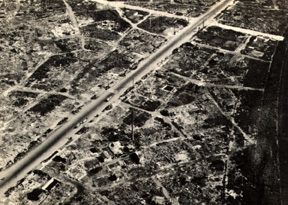 |
|||||||||||||
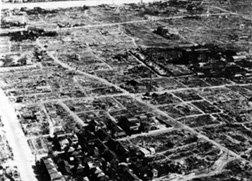 |
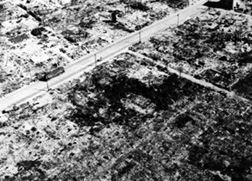 |
|||||||||||||
|
The photos of Tokyo devastation, were taken during the late spring and early summer of 1945. The photo of the Saipan aircraft wreckage boneyard, below right, gives just a glimmer of the human and material resource investement made by the U.S. to achieve the final victory. |
||||||||||||||
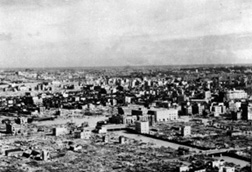 |
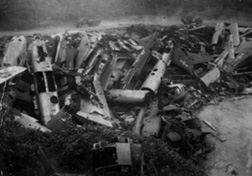 |
|||||||||||||
| We started at once on mercy flights to our POW's in China and Japan for POW food and medicine drops. On our first drop we went to altitude until about 150 miles from the China coast and then dropped to tree top level over the China Sea and continued at wave top to coast in. We did not know their radar capabilities and whether they knew the war was over. We coasted in right over Shanghai and followed the Yangtze river at tree top level down the middle of the river. |
||||||||||||||
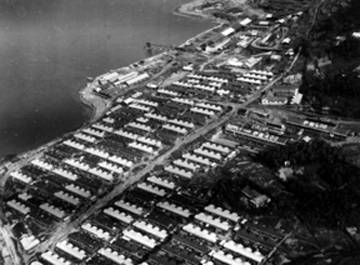 |
||||||||||||||
| I remember seeing boat after boat with crew members that were jumping overboard as they were afraid that we would strafe them.They had never seen a B-29 that close, that loud, that speed and that low, which was 10 knots under red line at 310Ks. I do not remember the exact drop zone that we were to drop on but it was far and deep into the North West interior.
We all signed a list that was placed inside the 2/55 gal barrels that were welded together and had cargo parachutes attached. As best that I can remember there were eight total in the two bombays. They were jam packed with medical, toiletries, clothing and C-Rations. We came in at a slow airspeed with 20 degrees of flaps and confirmed the drop area and then returned for the drop which would be cleared of any POW's. The POW camps were well marked, however we did not have radio communications with them. You could see plain as day the prisoners waving home made American flags and sheets, pillow cases and what ever they had available. They were jumping up and down and we almost could hear the shouting and screaming as we passed. A lot were former B-29 crew members and a lot from the Battan Death March. We then returned for a slow pass wiggling our wings followed by a high speed pass directly over them wiggling our wings on departure, This first camp we dropped on was where Gen. Skinny Wainwright was a prisoner. We did not know that until several weeks later when a copy of a letter signed by him in appreciation for our efforts was presented to our crew. I sure wish I had a copy of it still, but it was destroyed just a few years ago. The mission averaged out at 16 hours each. Things tapered off rapidly after the POW emergency supply runs had been carried out. From that point on, it was hurry up and wait for our anticipated return state-side. |
||||||||||||||
|
markings on roofs, upper right. This page, all official USAAF Photos, Ctsy. Earl Myers |
||||||||||||||
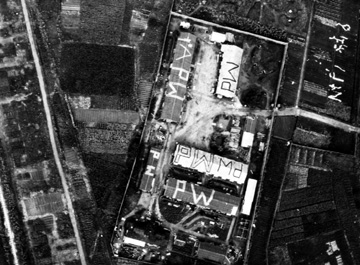 |
||||||||||||||
|
|
||||||||||||||
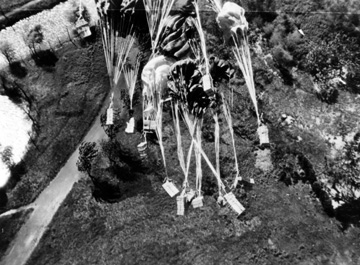 |
||||||||||||||
|
|
||||||||||||||
 |
||||||||||||||
|
supplies from the air drop. |
||||||||||||||
|
Editor’s Note: There are two documents, related to this presentation that are available for your review: * One is an instruction sheet, packed in with the air-drops that gave advice on the distribution and appropriate use of the contents of the container. You may click here to access this information. |
||||||||||||||
| * The other document relates to Propaganda Leaflet Drops that were used towards the end of WW II in an effort to inform the Japanese people of the progress of world events as they related to the war effort. Click here to access this information
You will then return to this page to continue your journey. Our turn for rotation was soon to arrive, in spite of the seemingly long delays with little activity or opportunities to fly additional meaningful missions. We were transferred from Saipan to Guam to bring a B-29 back home. On Thanksgiving Day, 1945, our combat crew was preparing for a return flight to the United States. We were to depart North Field, Guam at 7 PM local for Hickam A. B. Hawaii for a daylight landing. We completed the required pre-flight and filed a flight plan. Then it was on to the mess hall for a scrumptious Thanksgiving Dinner. We departed on time. All of us were extremely anxious to return home after our tour in the South Pacific. Our arrival time at Hickam was approximately 8 A.M. local. Enroute we crossed the International Date Line eastbound and flew into another Thanksgiving Day. It had been a long day from arising on Guam to landing in Hawaii. After resting, I went to the Navy Base where a schoolmate from my home town of Independence, MO was stationed, James D. “Ike” Lewis. We went to Thanksgiving Dinner at the Hickam A.B. Officers Club and I enjoyed my 2nd Thanksgiving Dinner. I was very THANKFUL! Our return to the U.S. went according to plan. |
||||||||||||||
|
Go to EEM Introduction —Chapter 1 — 2 — 3 — 4 — 5 — 6 — 7 — 8 |
||||||||||||||